G.Skill Trident Z Neo DDR4-3600 C16 4x8GB
G.Skill has been in the market for some time now with their memory modules, and the Trident Z Neo offers some very cool looks as well as some great performance for AMD boards.
You’re also spoilt for choice here, with a range of speeds up to 3800MHz and capacities up to a whopping 256GB. We’re looking at the quad-channel kit today, which squeezes out 32GB of RAM at a speed of 3600MHz.
That doesn’t come cheap however – at $249.99 this particular kit is on the pricier side of what G.Skill offers. You could always opt for a dual-channel kit instead to cut down the price somewhat, as this depends entirely on your particular PC setup and budget.
Design
No matter what kit you choose, you’ll first and foremost get an awesome-looking piece of hardware. Each memory module features a two-tone design of black brushed aluminium and powder-coated silver, for a very sleek look. The fins at the top also help to dissipate heat, though a word of warning that they can be a bit sharp to press into when you’re installing the modules onto your motherboard.
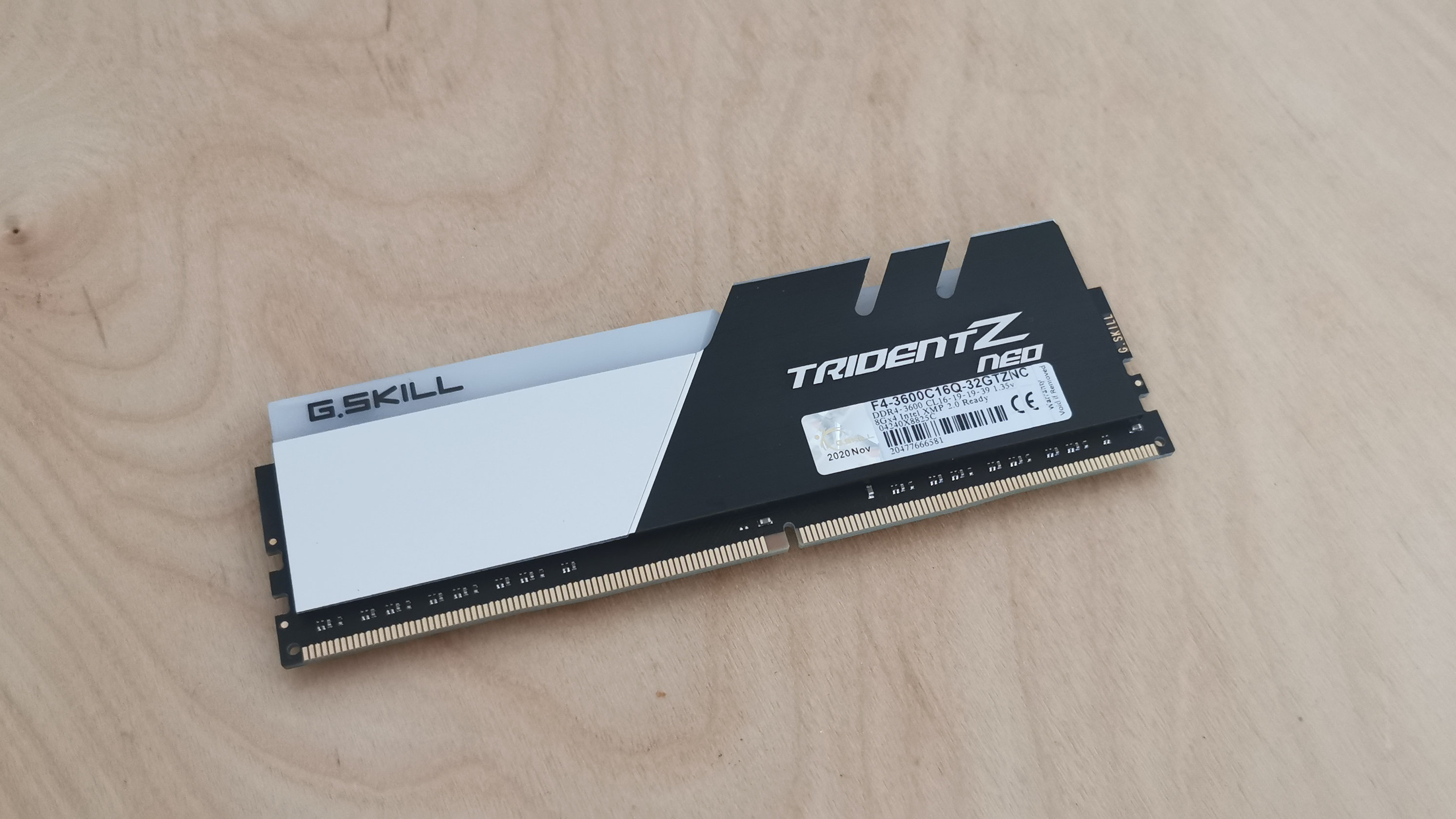
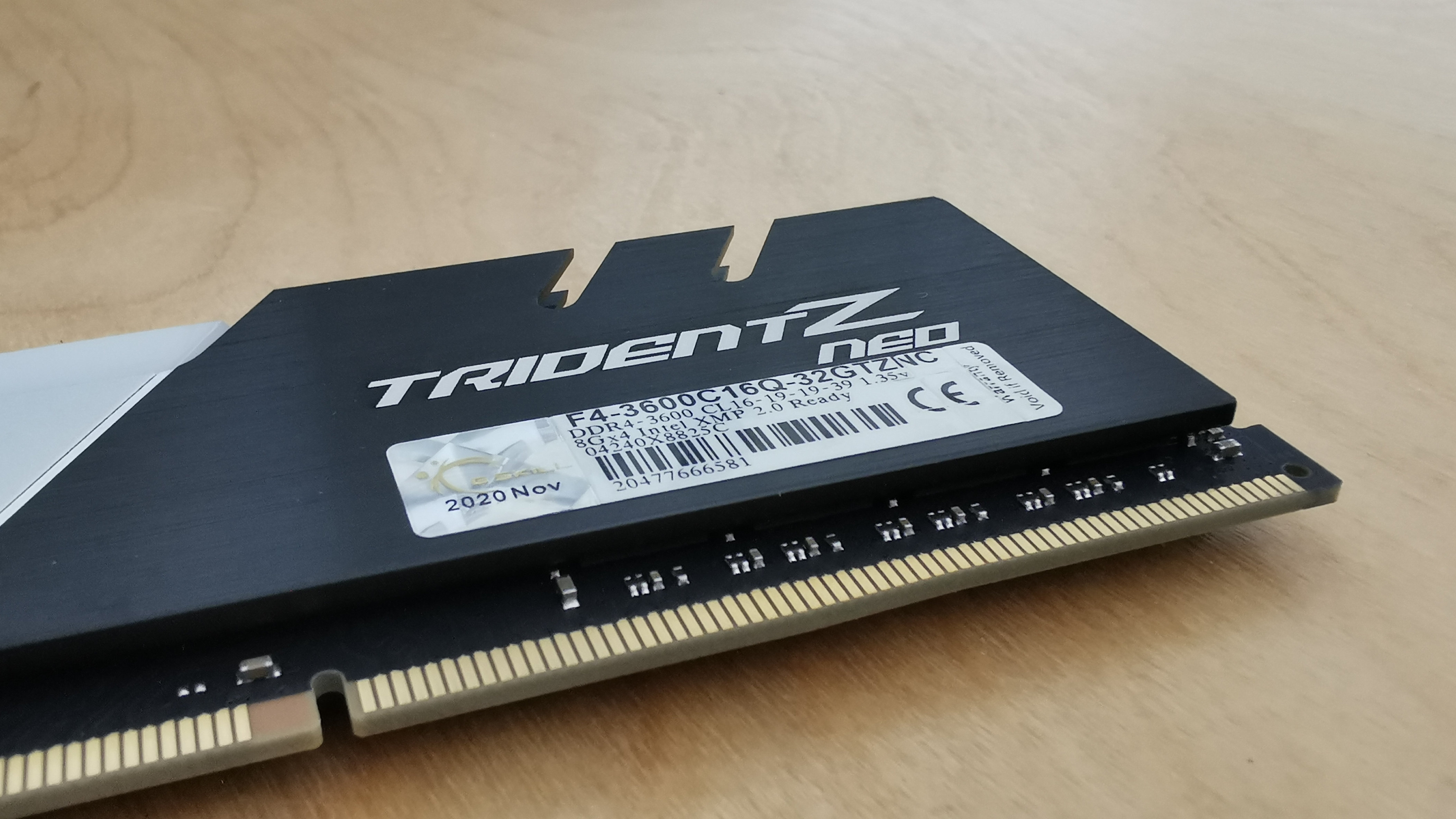
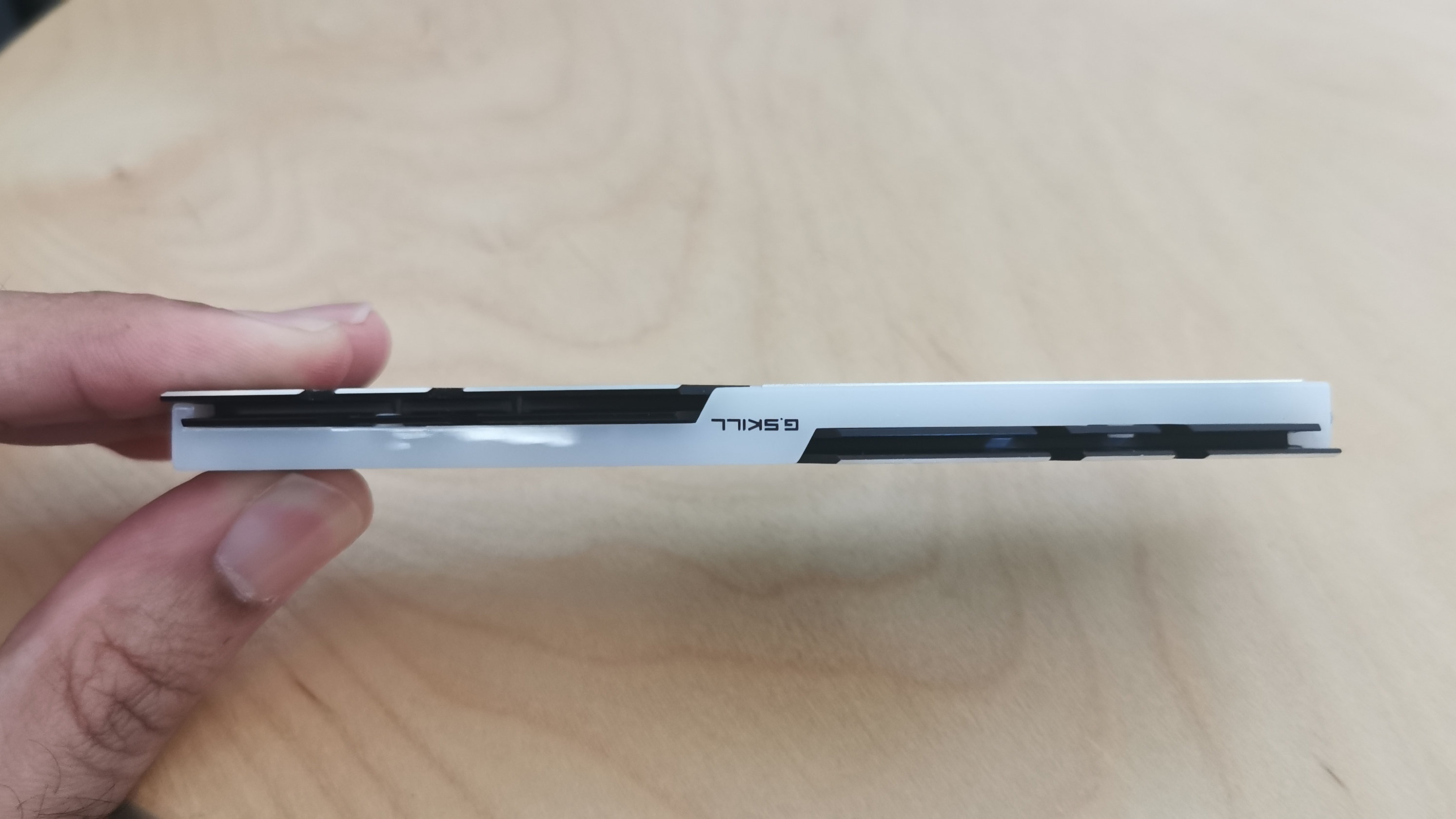
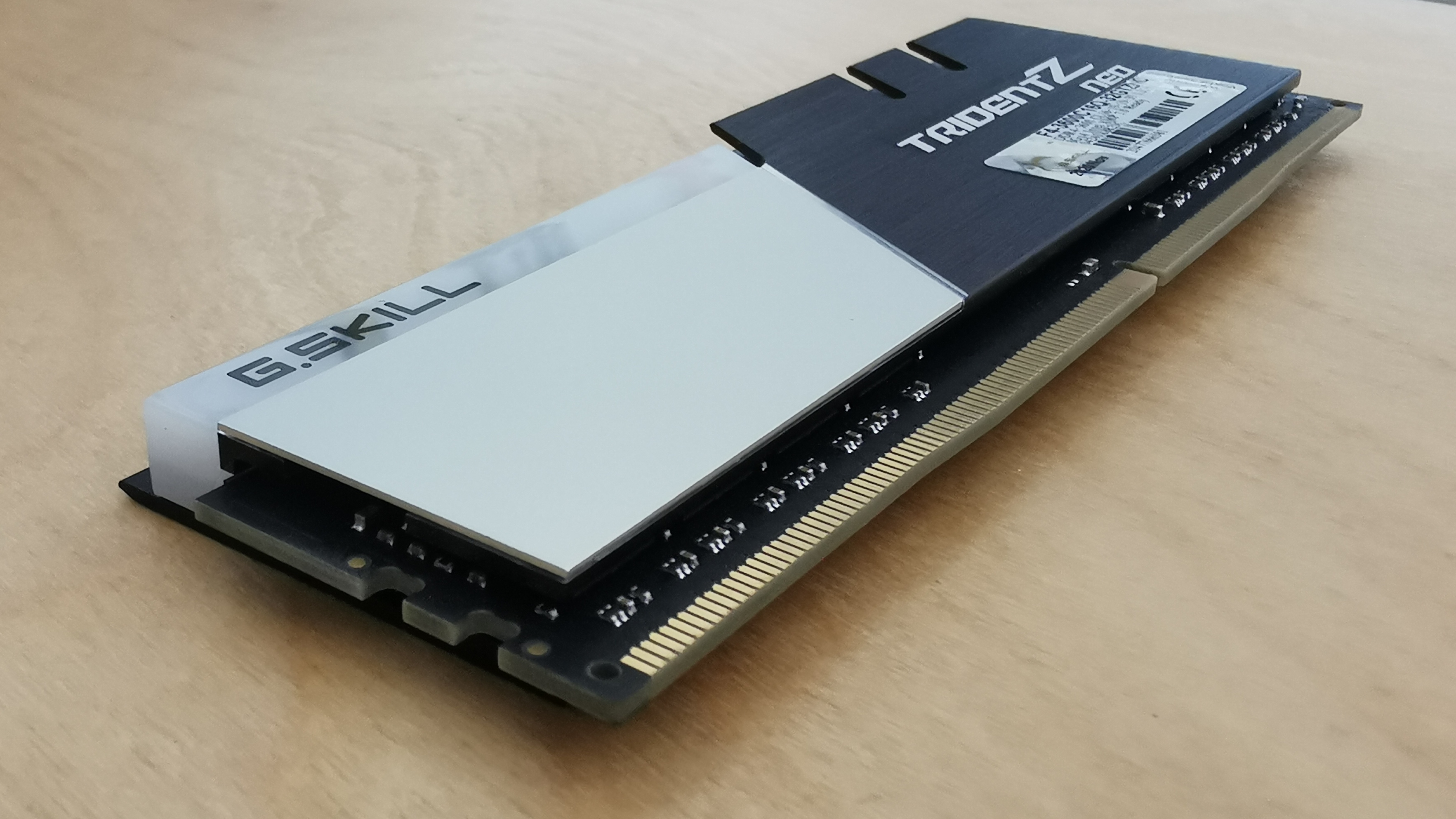
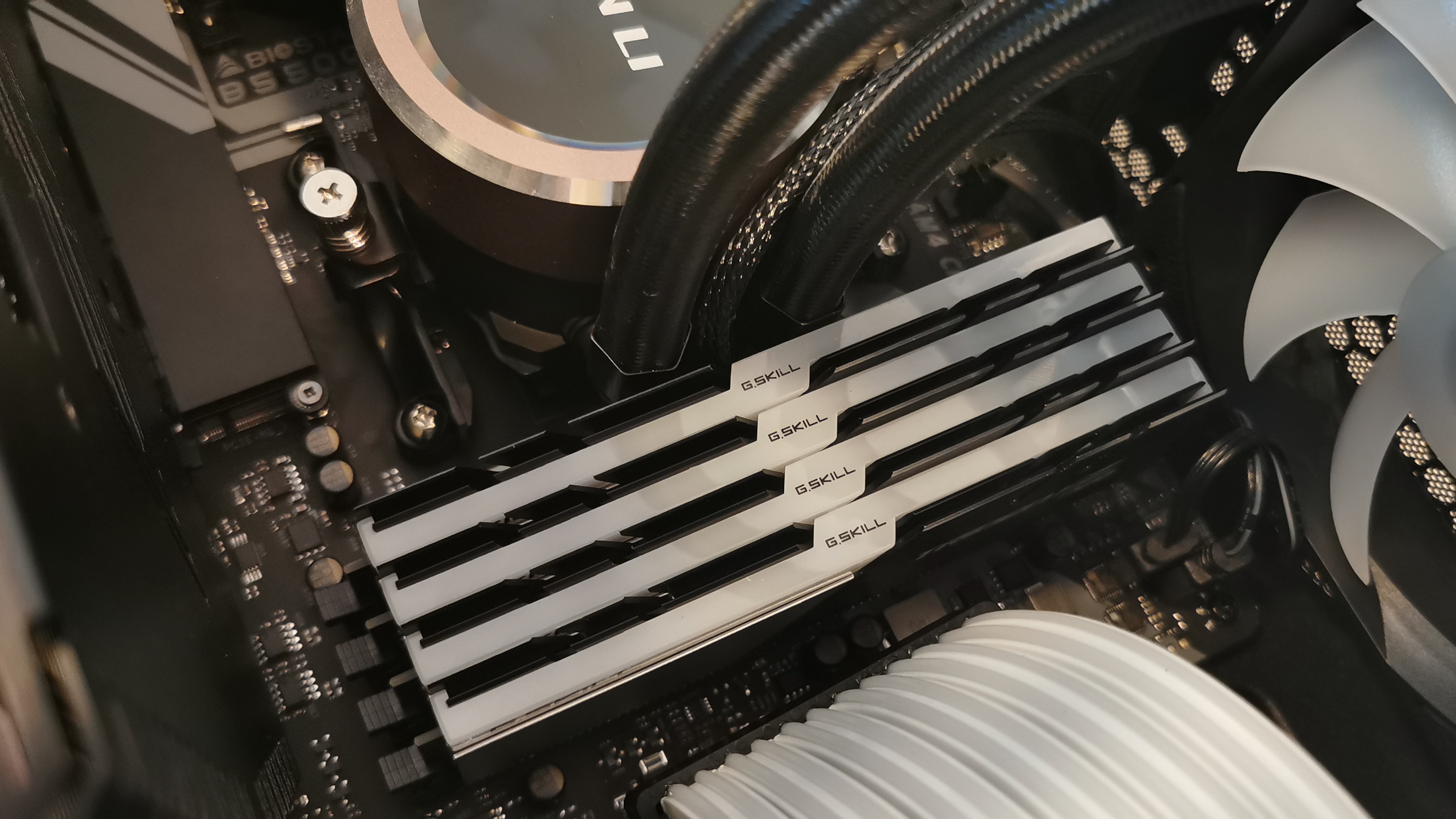
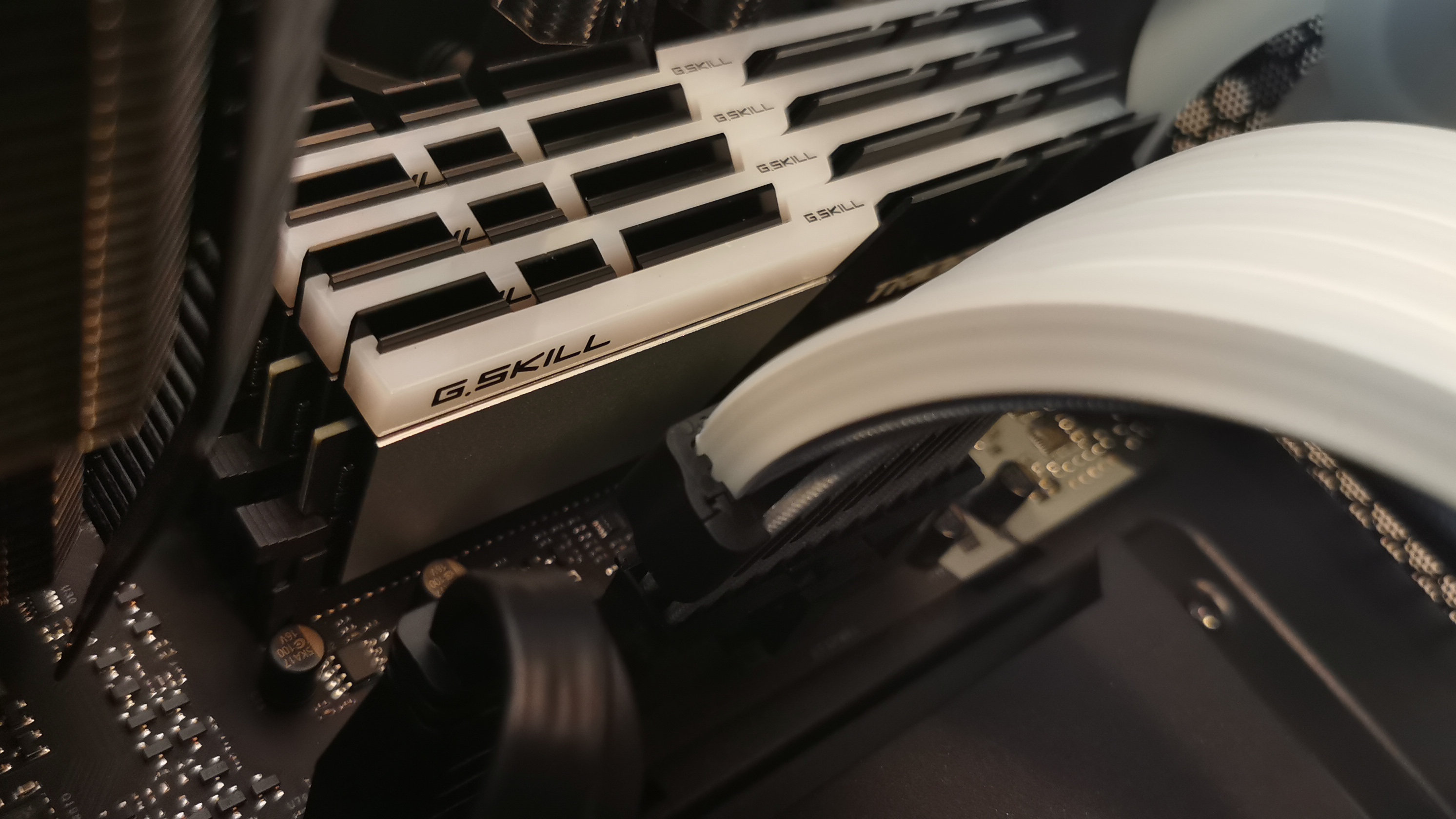
8-zone RGB lighting sections adorn the top of each module, which can be controlled through G.Skill’s own software for a variety of effects. Alternatively, it can be synced through software from Asus, Gigabyte, MSI, or ASRock if you don’t want to install additional software (depending on your motherboard model). Each module comes with a custom 10-layer PCB, and has been tested across a variety of motherboards for maximum compatibility. Out of the box, the modules run at 2133MHz, so in order to achieve the full DDR4-3600 performance, you’ll need to enable XMP from your BIOS.
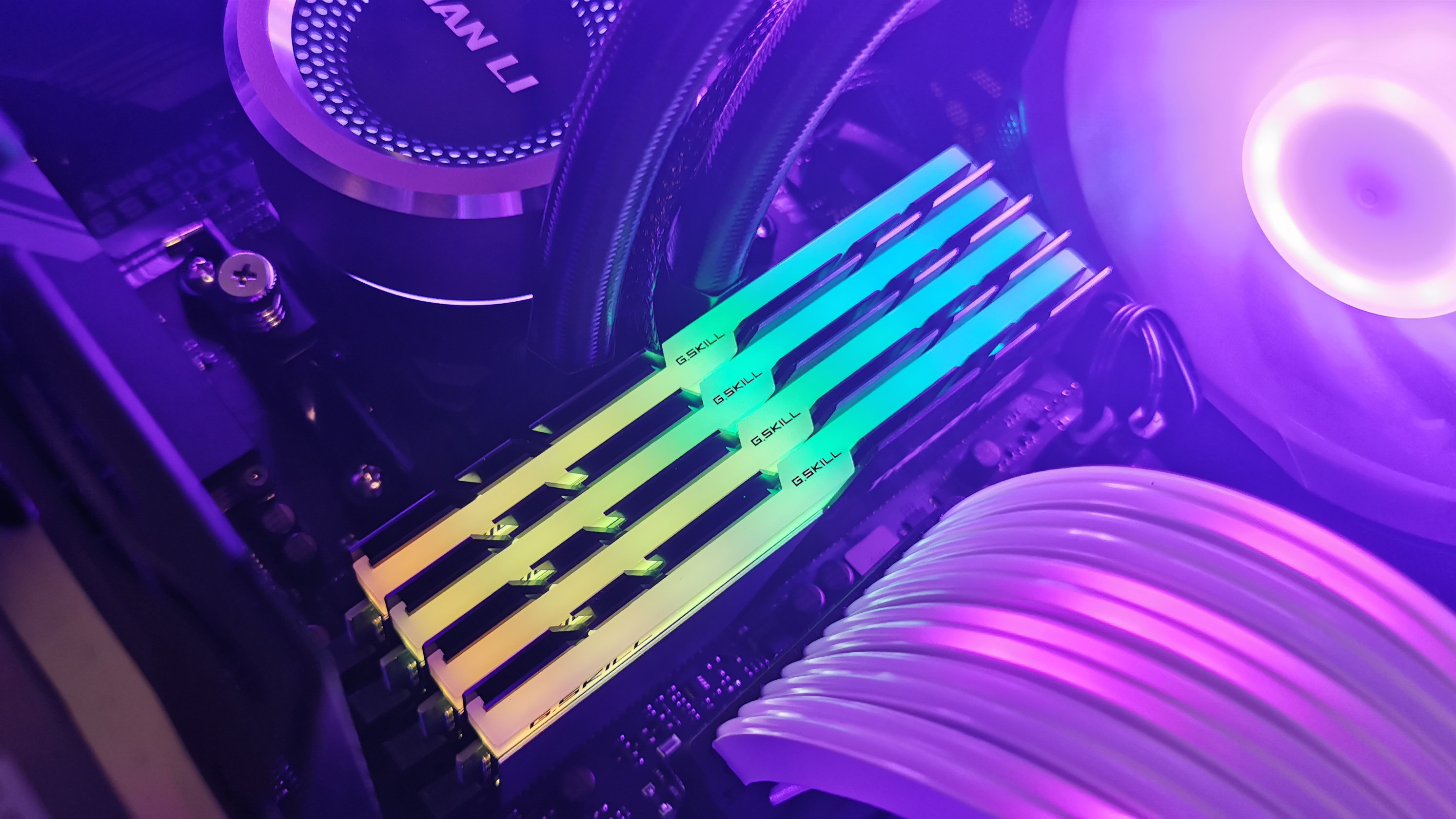
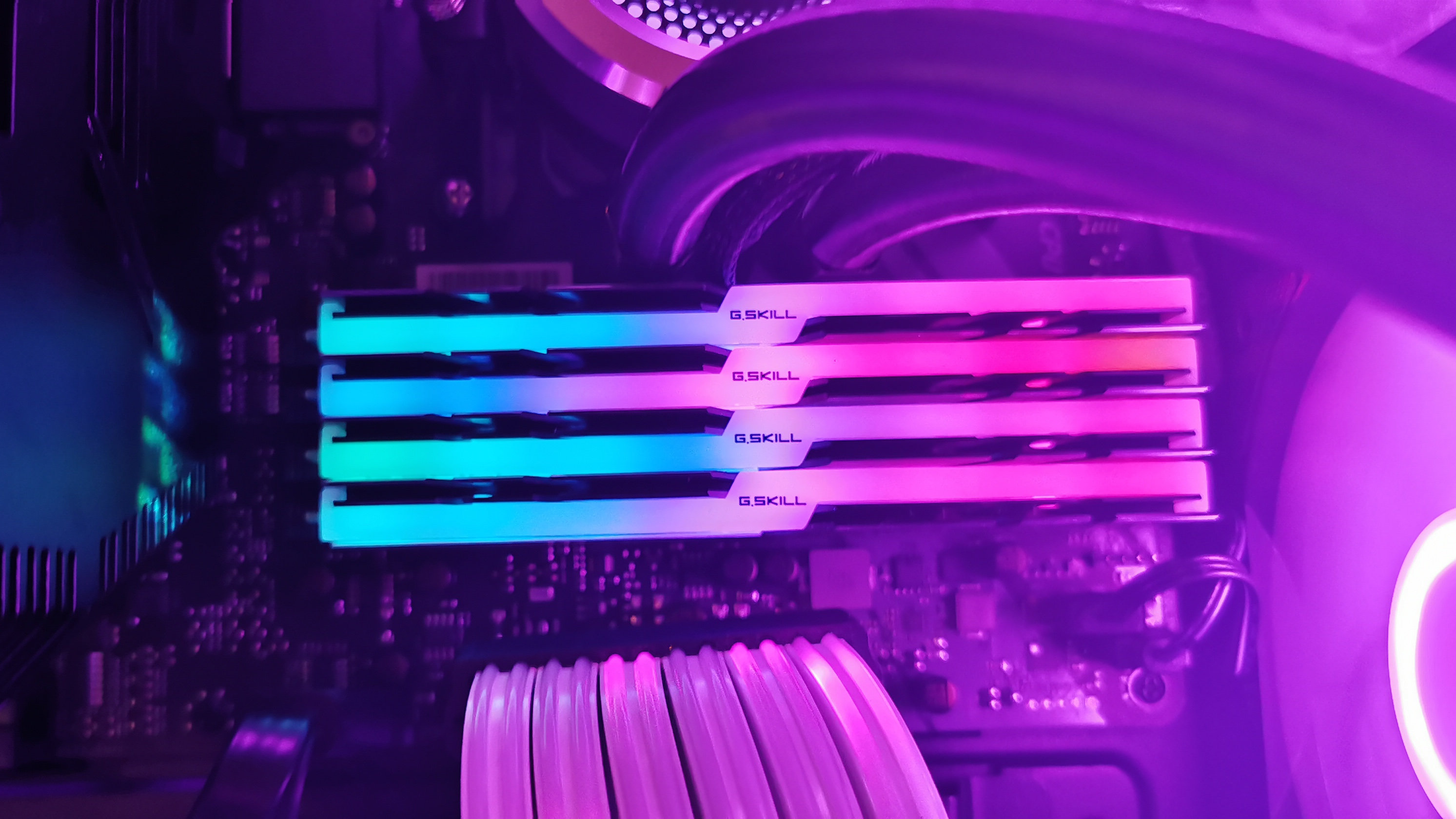
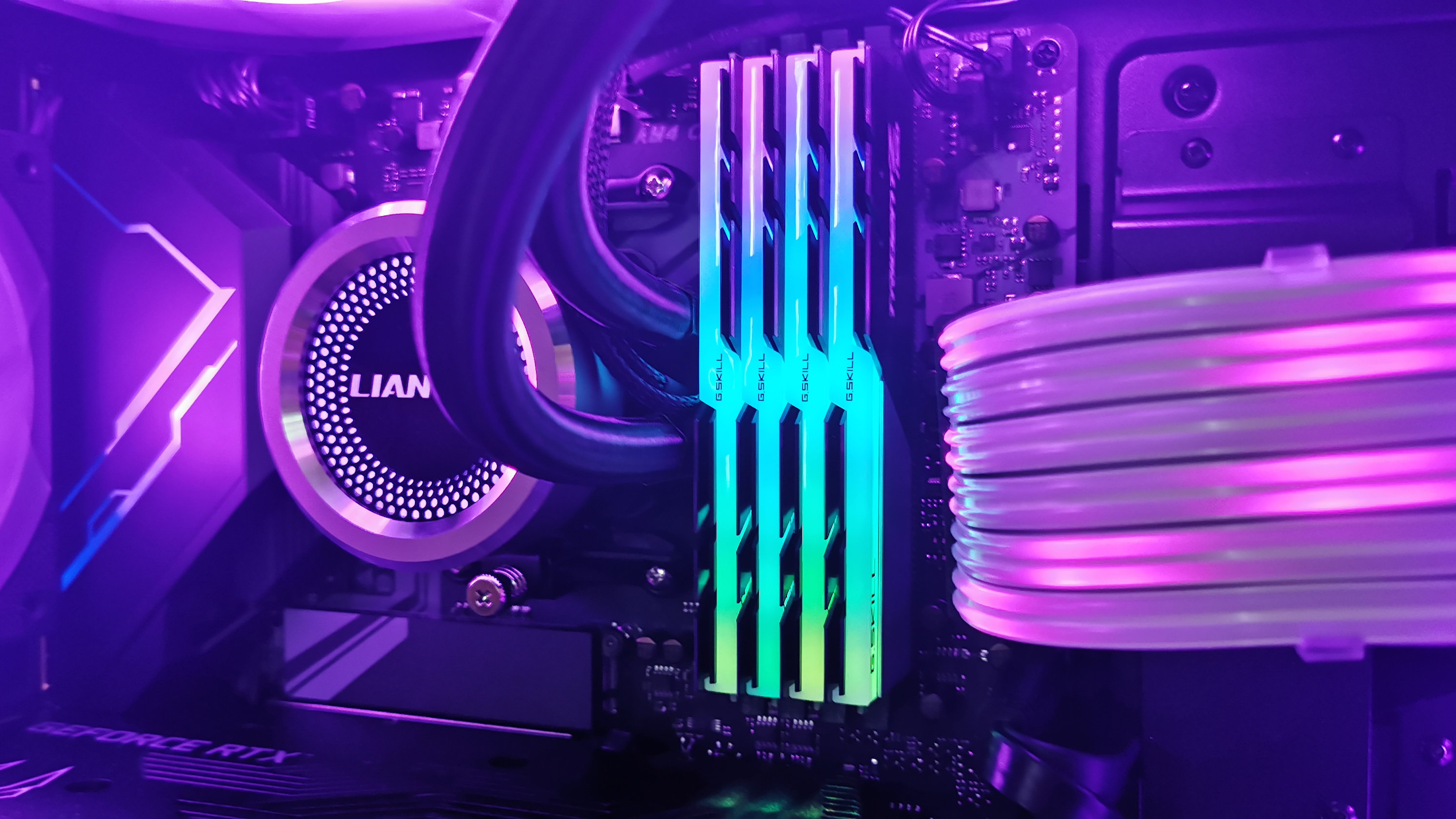
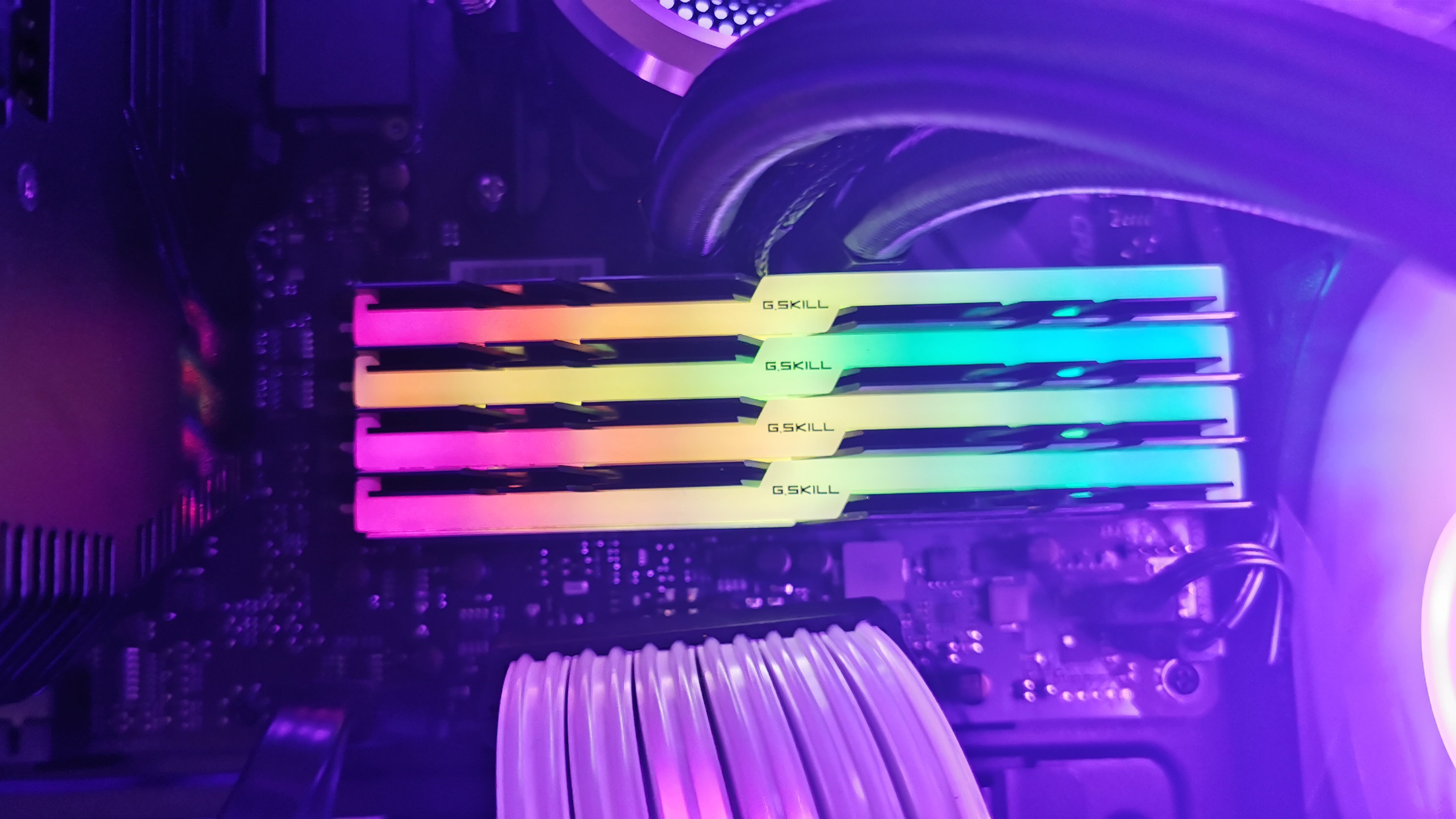
Performance
BENCHMARKS
Handbrake: (1080p 1min video) 54fps
Cinebench: 2184cb
3DMark: Timespy 13418
AIDA64: Read 50,235 MB/s; Write 28,736 MB/s
Our test system features a Biostar Racing B550GTQ motherboard, equipped with an AMD Ryzen 7 3700x CPU. With XMP turned on, we immediately saw the 3600MHz clock speed in CPU-Z, with 16-19-19-39 timings. This kit can be pushed past its 3600MHz limit to about 4000MHz where it remains stable, but trying to hit even slightly above that rendered our test system unstable after just a few minutes of use.
The default XMP settings at 3600MHz are still pretty fast, so unless you’re absolutely determined to squeeze every once of speed out of your RAM, you’ll be fine with just using your motherboard’s XMP profile.
Performance-wise it’s always tricky to benchmark RAM, simply because at the end of the day it’s real-world use that will make the most difference. Simply running synthetic benchmarks as the only test isn’t a real indication of how good a particular RAM setup is.
Nevertheless, in both benchmarking mode and real-world use, the Trident Z Neo DDR4-3600 did very well. For gaming, we saw a slight bump in framerates, sometimes as much as 5fps on very high settings in games such as Shadow of Tomb Raider. For opening multiple Chrome tabs (a regular memory hog) our test system didn’t falter once, and was still more than capable of running multiple apps in the background with ease.
Final verdict
The Trident Z Neo DDR4-3600 is a great pick for any AMD builders who want to add both performance and good looks to their PC build. It’s got great read/write speeds for most PC tasks, and gamers will enjoy the few precious frames they’ll stand to gain in most modern games.
For speed enthusiasts there’s enough wriggle room to play around with settings to get the most stable speeds, but even right out of the box the Trident Z Neo DDR4-3600 is an excellent addition to any rig. The RGB lighting is also well thought out and looks great – the only setback here will be whether or not you want to swallow the $249.99 price tag.
Comments
Post a Comment